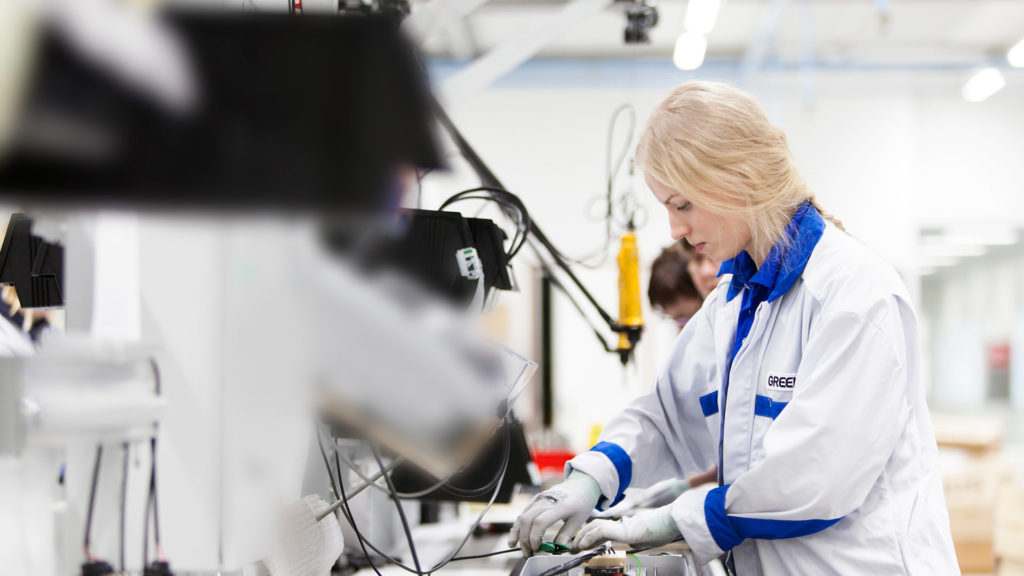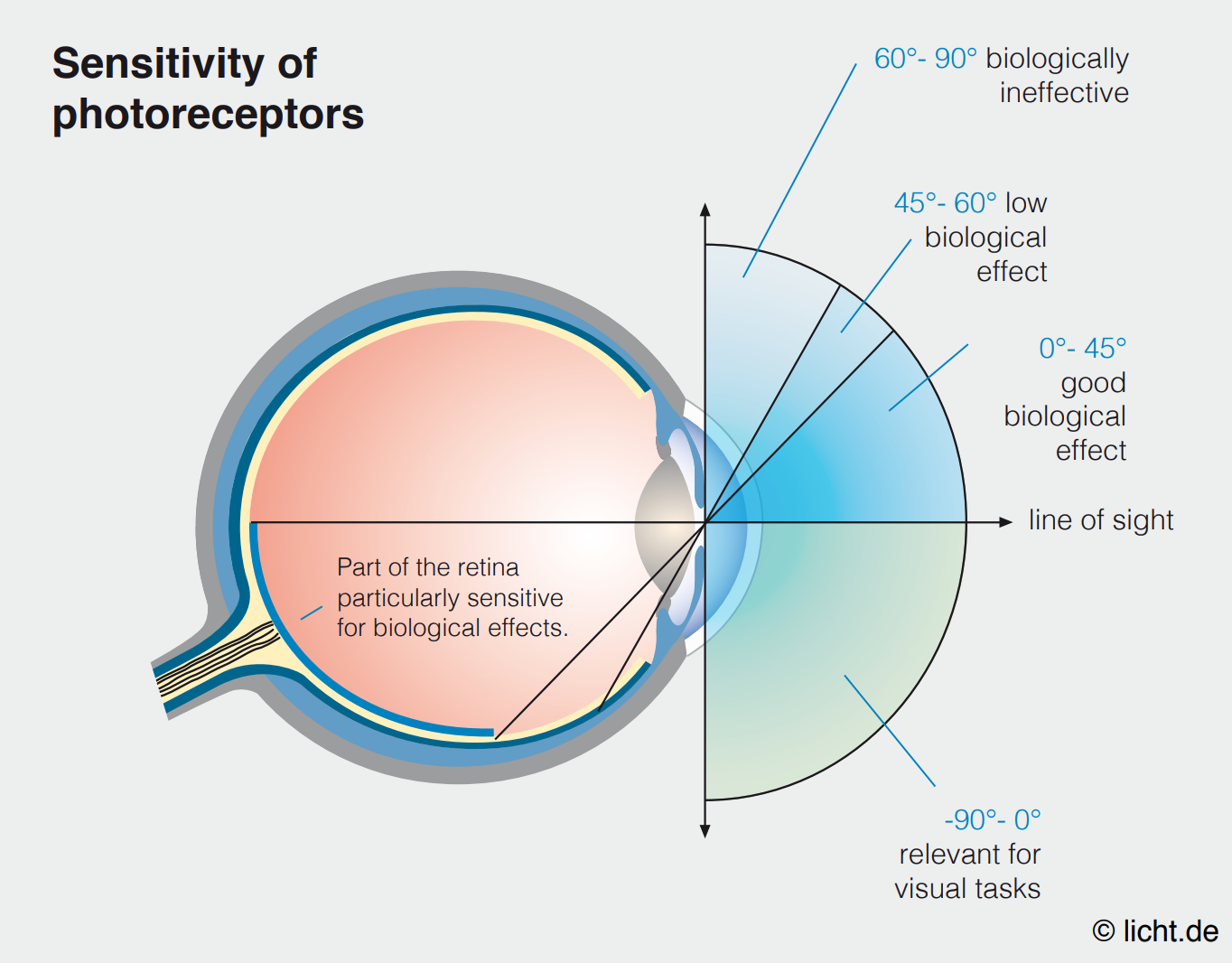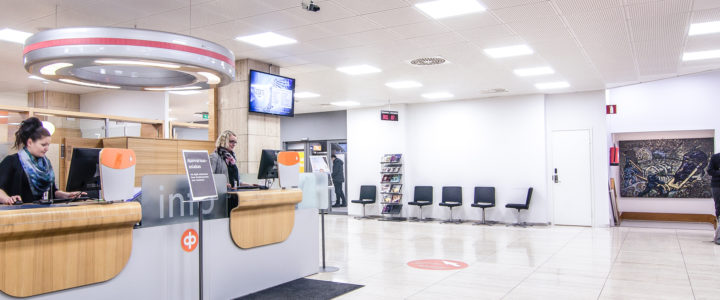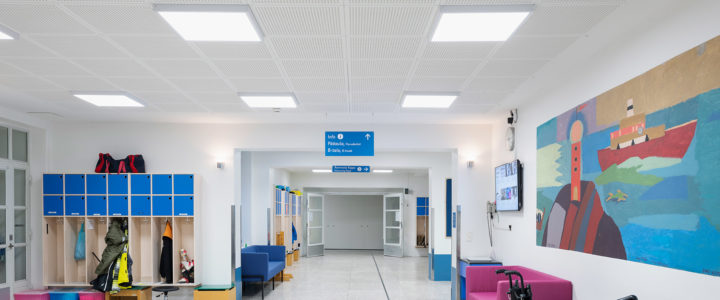Talk to our lighting experts  +358 20 125 5800
+358 20 125 5800

February 12, 2021
Why should HR directors care about lighting?
Lighting is often considered a technical purchase that is solely the responsibility of a property manager or other “technical person”.
The HR director might come across a lighting purchase in a board meeting where the energy savings of the lighting installation dominate the discussion. But does the topic of employee well-being come up in that context? Rarely.
Lighting should be of interest to those interested in the well-being of employees, as well as to those interested in the company’s competitiveness.
Read on to find out why.
Lighting and human well-being
Traditionally, lighting has been designed for the visual system: how much light is needed to conduct the work tasks? This is also the basis of international lighting standards, to which most lighting designs are based on.
However, the standards do not consider the deeper, non-visual aspect of light.
With increased understanding of the deeper effects, the concept of human centric lighting has emerged.
Human centric lighting aims to maximise the positive effects lighting has on people
The origins of the concept of human centric lighting can be traced back to 2007 when a research team lead by Russell Foster at the University of Oxford discovered so-called ipRGC cells or intrinsically photosensitive retinal ganglion cells.
These cells are located at the back of the retina and they directly impact the part of our brains that controls our natural circadian rhythm.
These cells have a unique feature: they are sensitive to short-wavelength blue light, which suppresses melatonin production.
Soon, the following conclusions could be drawn from the ground-breaking findings:
- Bright and blue light during early hours of the day increases alertness
- Incorrectly timed light signals will cause disturbances to natural circadian rhythm

Image: Our forefathers lived in harmony with natural daylight. Modern humans spend 90% of their time indoors, in spaces that are often poorly lit.
The importance of sufficient sleep and a good circadian rhythm has been researched extensively, and any one of us can list the positive health effects of getting enough sleep.
We also understand the effects of too little sleep both in the short and in the long term. Even just a single poorly slept night will affect the workday, and in the long term, the effects can be serious.
However, it is often forgotten that lighting is the most important factor affecting the circadian rhythm.
How does lighting affect circadian rhythm?
In an ideal situation, we all could spend time outdoors in the early hours of the day and get a sufficient amount of light to support our circadian rhythm.
However, we know that often this is not possible. At northern latitudes, a person working normal office hours will often not see any daylight during their workdays.
The early hours of the day are the most important for our circadian rhythm, and the employer can affect these hours by providing lighting that supports the natural circadian rhythm.
The following properties of light affect circadian rhythm:
- Amount of light
- The colour temperature of light
- Direction of light
- Timing
- Duration
Human centric lighting is relatively complex, and designing it requires a professional. Nonetheless, the basic principle can be simplified as follows: in the early hours of the day, we should produce bright and blueish light that gradually fades to a dimmer and more yellowish light towards the evening.

Image: The amount of light that reaches the intrinsically photosensitive retinal ganglion cells is crucial in regard to the biological effects. The most important is vertical light, meaning light that comes at an angle of 0–45°. (Image source: licht.de)
Impact of lighting: research from various industries
The impact lighting has on people has been researched in many field studies in different industries. One of the best known studies, published already in 2002, was conducted in the metal industry. Increasing the amount of light from 300 lux to 500 lux resulted in the following average impact:
- 6% increase in task performance
- 8% reduction in the number of rejects
- 14% accident reduction
Increasing the amount of light from 300 lux to 2,000 lux produced even more significant impacts:
- 16% increase in task performance
- 29% reduction in the number of rejects
- 52% accident reduction
The impact of increasing task illuminance in an industrial setting was also studied in the 2007 doctoral dissertation of Finland’s Henri Juslén. Field studies showed considerable increase in productivity that reached up to 7.7% at best. The same study also detected a decrease in absenteeism when the illuminance was increased.
In recent years, Lighting Research Center, the leading research centre in the area of human centric lighting, has published several studies conducted on office workers, where human centric lighting has been found to have the following benefits:
- Falling asleep quicker at night
- Better circadian entrainment
- Improved sleep quality
- Reduced symptoms of depression
- Increased alertness and vitality
In a study commissioned by LightingEurope and ZVEI in 2015, the effects of human centric lighting were assessed in seven different sectors. Of these, the following effects were observed in the education sector:
- 15% improved cognitive performance in affected pupils
- 10% reduced healthcare and education costs due to fewer ADHD effects
- 18% improved treatment efficacy for mental disorders
- + 2 years duration of employees staying
Plenty of research still needs to be conducted on human centric lighting, but so far, it’s clear that is has a considerable effect both on individuals and the society.
Final thoughts
As we have noticed, light affects us much more deeply than just on the visual level.
By improving lighting, we can have a direct impact on people’s circadian rhythm and remedy issues that disturbances to it can cause. The end result is a healthier, well-being and more efficient employee.
Soon, we will return to times when the new normal of remote work will no longer be a necessary evil. Most of us will return to the familiar environment of our workplaces, together with our colleagues. The question is what kind of lighting conditions will we return to?





